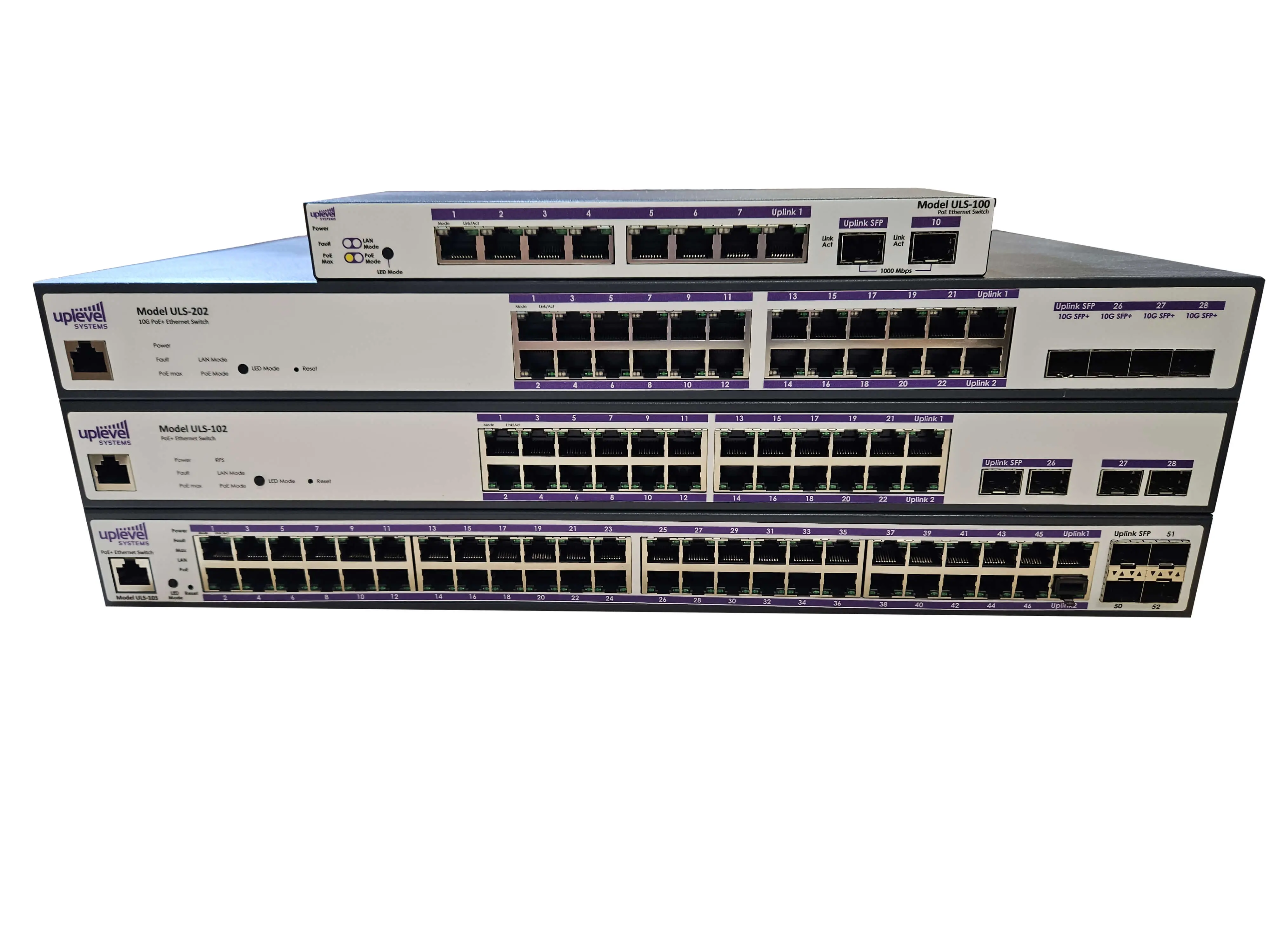

Enterprise-class Wired Connectivity
While Wi-Fi(tm) may be ubiquitous, small businesses also rely heavily on wired Ethernet connections. Some devices (desk phones, servers, specialized equipment, etc.) cannot use Wi-Fi at all, and require a wired connection.
Uplevel's Ethernet switch family makes supporting robust, high-performance wired connectivity a no-brainer. A full selection of 8-port, 24-port and 48-port switches (with Gigabit and 10 Gigabit uplinks) allows any business scenario to be cost-effectively supported. Uplevel switches are fully VLAN-capable and cloud-managed. They are automatically detected and provisioned when plugged into a gateway, or another switch. VLAN trunks between switches are automatically configured to support the different subnets and virtual networks - no manual intervention needed! This makes building out even the most complex LAN 'plug-and-play'.
Uplevel switches also detect Uplevel APs, and bring up trunks to support secure Wi-Fi SSIDs. All Uplevel Ethernet switches support Power over Ethernet (PoE+) with up to 30 watts of power output per port, and enough capacity to power a typical PoE device on every port. This eliminates the hassle of determining the power budget and dealing with frustrating issues when PoE limits are exceeded. Also, PoE can be controlled remotely from the cloud portal, making it simple and quick to 'bounce' a misbehaving phone or AP.
Answer: An Ethernet switch connects multiple devices within a network, facilitating efficient communication by directing data packets to their intended destinations based on MAC addresses.
Answer: Ethernet switches primarily perform forwarding, filtering, and segmentation of network traffic to ensure efficient data transfer among connected devices.
Answer: One disadvantage of Ethernet switches is the potential for a single point of failure, where malfunctions or power loss can disrupt communication between devices. Additionally, poorly configured switches may lead to network congestion and performance issues.
Answer: Generally, using an Ethernet switch should not result in speed loss. However, overloaded switches or lower-quality hardware may impact network performance.
Answer: No, Ethernet switches do not require connection to a router. While commonly used with routers to expand network capacity, switches can function independently to connect devices within a network.
Answer: There is no functional difference between a network switch and an Ethernet switch; they refer to the same device. Both terms are used interchangeably to describe a device that connects multiple devices within a network.